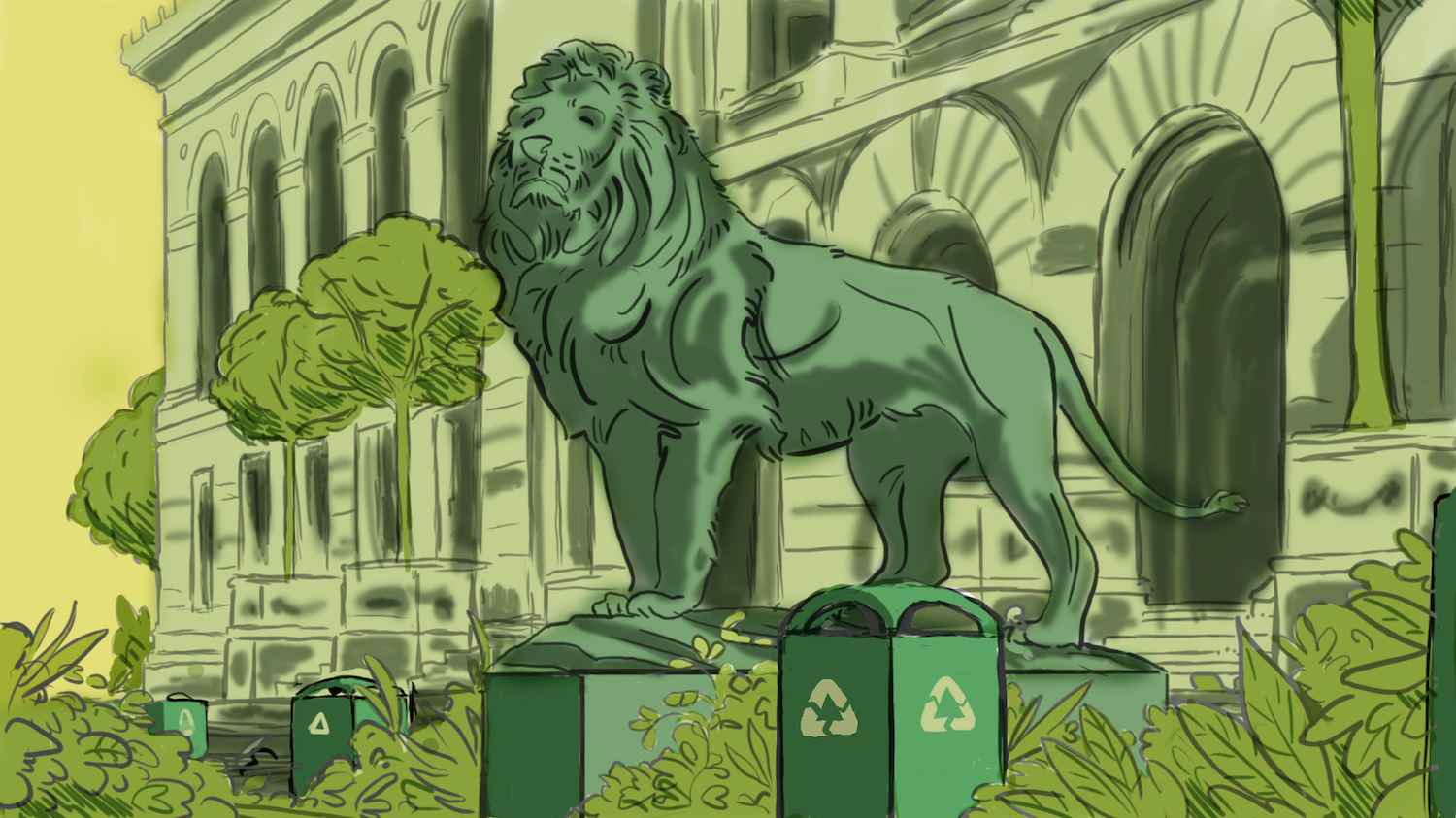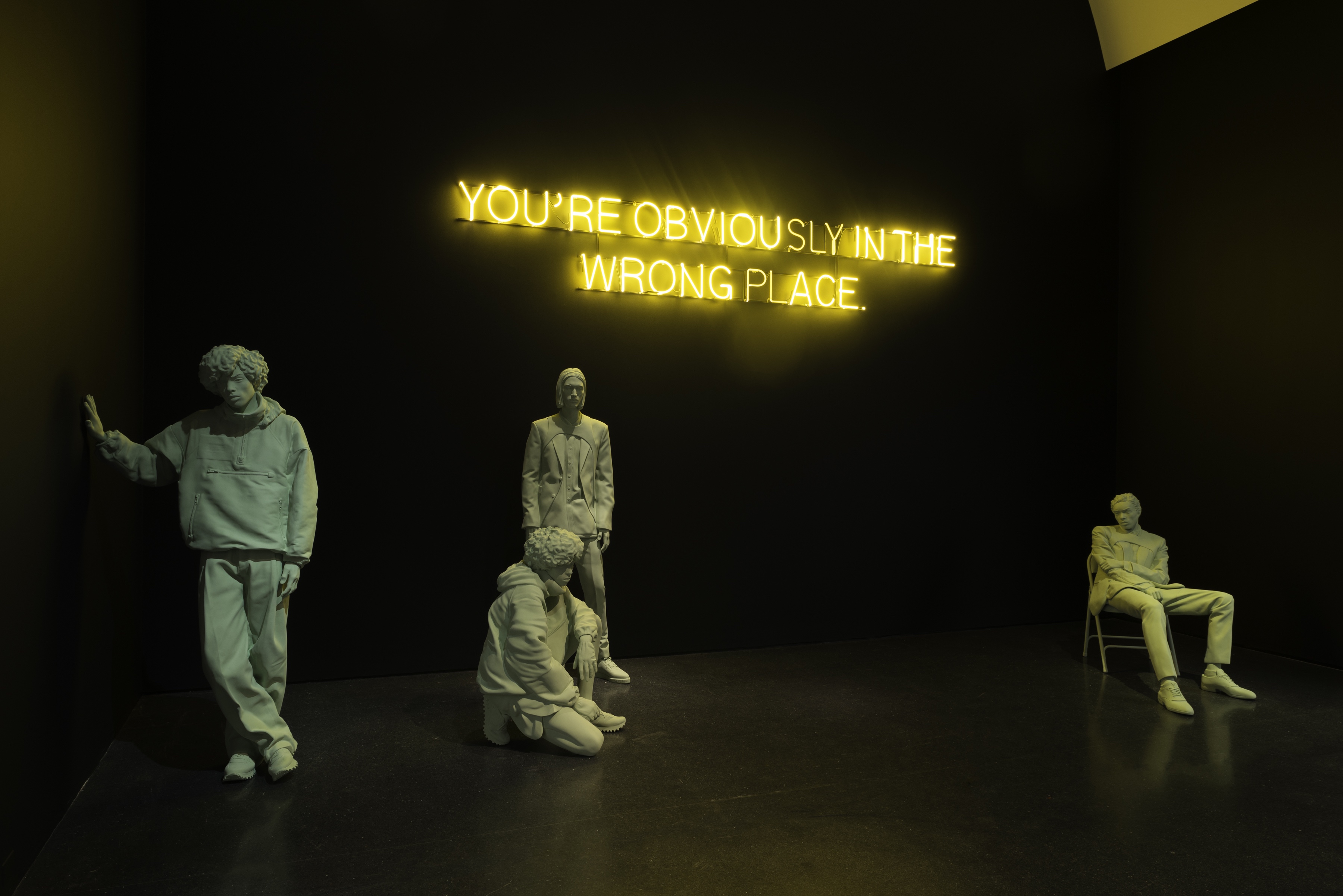As world-record-breaking heatwaves strike across the globe and species after species goes from endangered to extinct, it is more vital than ever to address sustainability. Chicago has implemented its own Department of Environment and Sustainability, responsible for combating large-scale city issues like wage gaps, climate change, and waste. Following suit, the School of the Art Institute of Chicago (SAIC) has also introduced its own sustainability program to address the waste produced in higher education.
I recently sat down with Tom Buechele and David Vasquez, two of the people responsible for managing the program on campus. Buechele is Vice President of Campus Operations at Instructional Resources and Facilities Management (IRFM), and Vasquez is SAIC’s Sustainability Coordinator. The sustainability program at SAIC was founded after an alum sent the school a letter on the day of her graduation, requesting hire for the job that was so desperately needed. It has since grown to become an integral part of SAIC.
Vasquez’s Sustainability Coordinator position began as a part-time job but is now a full-time position including a team of student fellows. Because many students are not aware of the program or how it began, the interview was an effort to inform our community of the role that we play in creating a more sustainable environment at SAIC and in our own lives.
McKenzie Fitz: How did you get interested in this type of work?
David Vasquez: I watched a documentary my junior year of high school that presented facts about how bad the environmental crisis may get, as well as the reality that we have the technical solutions and the worldview necessary to resolve these issues. That made me change what I wanted to do with my life. Having a secure and prestigious job, like a dentist, was all good and fine, but I felt I had the ability to be a part of the solution, to create a new paradigm.
MF: What qualifies someone who works in this field?
DV: I got a Bachelor’s degree in Environmental Science and Policy at the University of South Florida St. Petersburg. I began my journey there by joining an environmental awareness society. I learned to organize events and awareness campaigns, then I interned for the sustainability coordinator at my university and eventually became the vice-chair for a student green fee. After my internship, I became the Director of Sustainability for student government where I gained experience doing greenhouse gas inventory, created workshops, and designed and led the creation of a food force on my campus.
MF: What is a student green fee?
DV: It was a committee made up of students, faculty, staff, and administration that collectively voted on what to do with a fee, collected from all students on campus — about a dollar each.
MF: What would you say brought you to SAIC?
Tom Buechele: I was a student in 1986, as a matter of fact. I have two degrees from SAIC, a BFA in 1989 and I just finished my MFA in 2017.
MF: What made you decide SAIC was where you wanted to stay?
TB: I left for a while. I was gone for about 2 years where I went to work in LA and came back. SAIC was and still is a place I know and believe in.
MF: What about you, David?
DV: All of the previous experience at my last campus lead me to SAIC. I got the job because of a year-and-a-half journey dedicated to sustainability in higher education which gave me the experience to apply for this job. I’ve also gotten very immersed in music and arts culture. I’m developing my own practice focused on graphic design and animation as related to a live musical experience. I thought it would be ideal to work at a place that had a focus on art but was also committed to being a part of the change for a sustainable society. I’ve challenged myself to find a way to merge sustainability with art.
MF: Currently, what is the sustainability department at SAIC responsible for?
TB: I would say there is an office rather than a department. It’s really a partnership across the school within the department of IRFM. Sustainability only works if it involves multiple parts of the institution. We work primarily with other departments’ energy consumption and waste production. With some departments, it’s about programming classes. Then the initiatives and goals are managed and organized through David. It started with the President’s Climate Action Plan which we signed in 2011.
DV: I’d add that my main job is to develop, coordinate, and administer programs and policies within SAIC. I’m responsible for promoting information to the SAIC community on programs, projects, and competitions related to sustainability.
TB: There are a lot of aspects to sustainability on our campus. Clearly, everyone knows recycling, but not everyone knows that we spent a great deal of money modernizing our equipment to decrease our energy consumption by 40%. That’s the fastest and most impactful way to curb our impact on the environment. The school is 100% green on electric consumption by purchasing offsets. The plan in future years is to buy green power directly from the source.
DV: Since I’ve started, I did the Unplugged Competition, our Earth Day bike safety awareness campaign, a zero-waste move-out initiative, and a few weeks ago there was a Bike-to-Work kick-off event and campaign. Currently, I am transitioning into updating our Climate Action Plan and creating a campus sustainability rating metric to see how we compare to other universities around the world. I supervise my two current student fellows on the Real Food Challenge and other projects they are developing as well.
MF: You mentioned purchasing directly from a green power source in future years. Are there any other new initiatives planned for the foreseeable future?
TB: Aside from redrafting our climate action plan this fall, there was also the bees we purchased this summer and just installed three weeks ago. We hope to produce honey to give back to the community. We’re adding to the important bees in our local agriculture. They’re under tremendous threat, but urban bees are fabulous because of the non-monoculture available in the city. The bees are incredibly healthy here.
MF: What’s in the works for the institutional side of things?
TB: One of the bigger initiatives of the new climate plan is to tackle waste on campus. We create an enormous amount of waste, the highest percentage of which comes from studios and residence halls. We need to think of more creative ways to incorporate sustainability in art projects. We need to think about the materials we use in instruction, and to realize that artists have a responsibility to themselves and the environment. Pink foam is not the answer to everything. You can quote me on that.
MF: How can students get more involved around campus?
TB: They can always email us or reach out to David, or get involved in the Student Environmental Actions (SEA) group.
DV: They can apply to be sustainability fellows that work alongside the coordinator or they can develop their own initiatives that the office would be more than happy to help with. They can also volunteer to help with any of our events, like sorting and collecting donations during the end-of-semester move-outs.
MF: Any final comments either about the program or sustainability in general that we should keep in mind?
TB: I think people generally just need to slow down and think about how the choices they make have an impact on the environment. It goes a long way to change your mindset. Try turning the lights off, buy a different piece of material, reconsider how you dispose of your waste, etc. It goes a long way to train ourselves to be better.
DV: We have a huge opportunity to be a more sustainable campus. I’m proud of everything we do but there’s always more than can be done. I think that we’ve reached a point in time that without constricting artists’ creativity, sustainability should be a consideration always. At the same time, artists have a huge opportunity to move the conversation forward because it’s a lot easier, in my opinion, to interact with art rather than to listen to a lecture.








